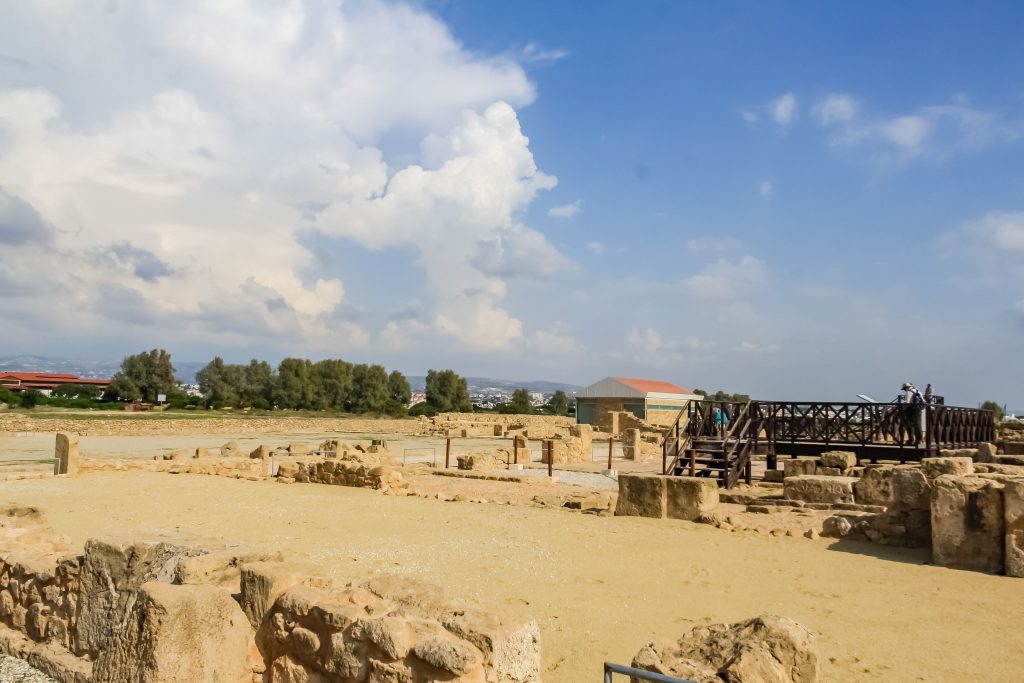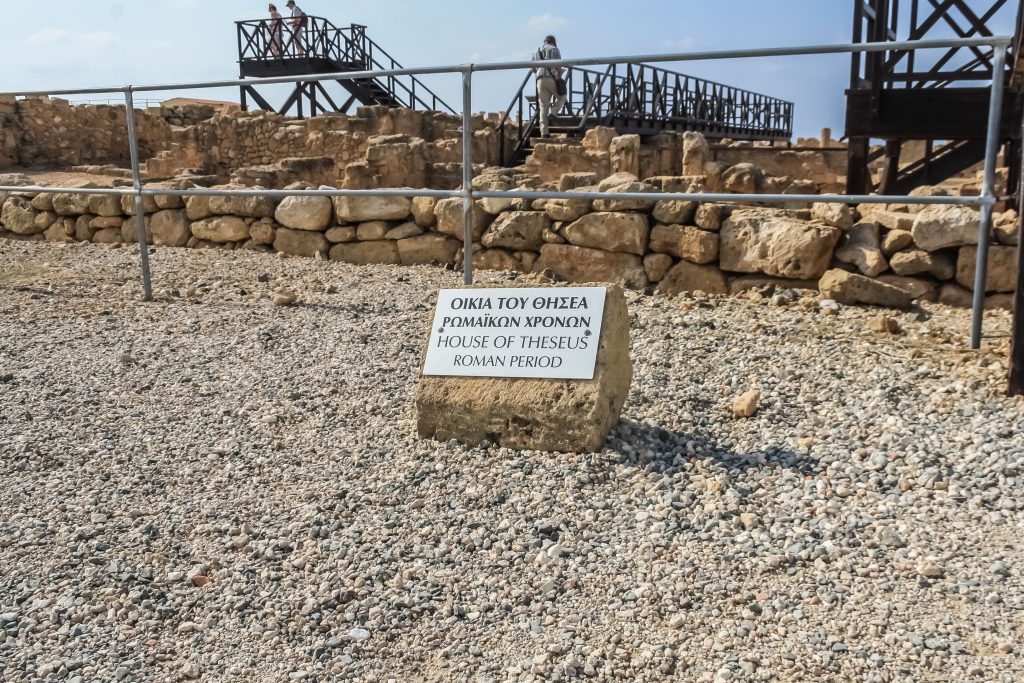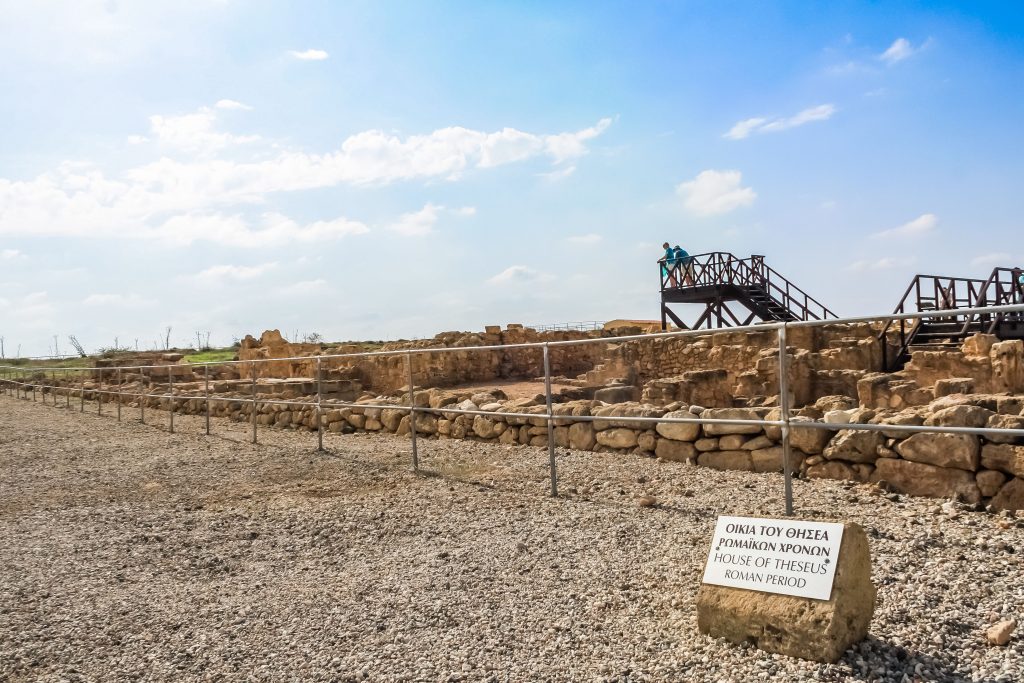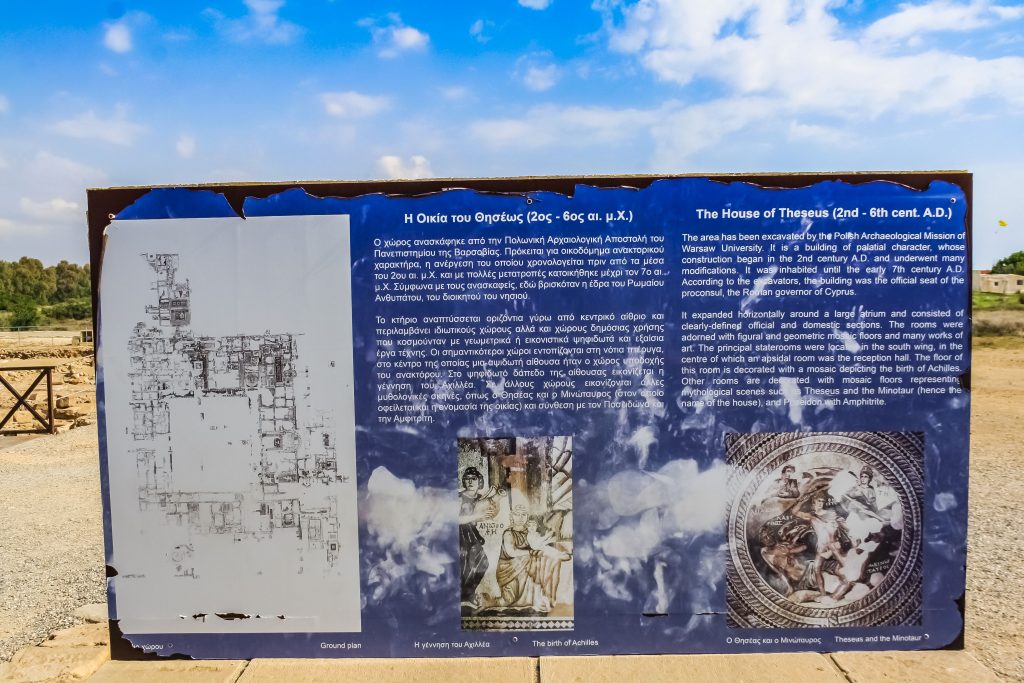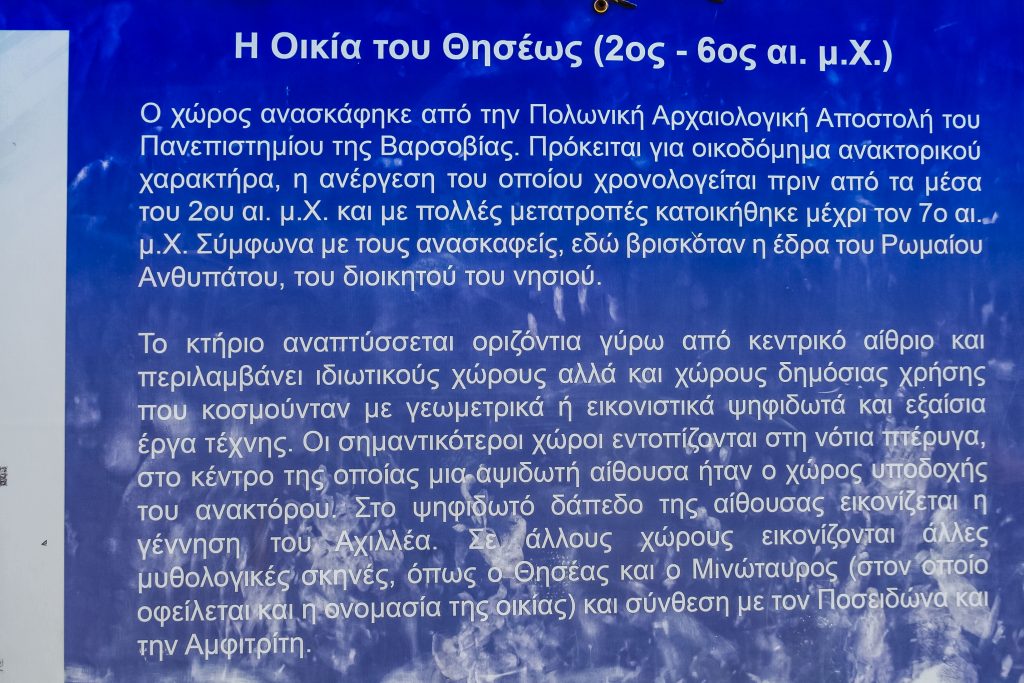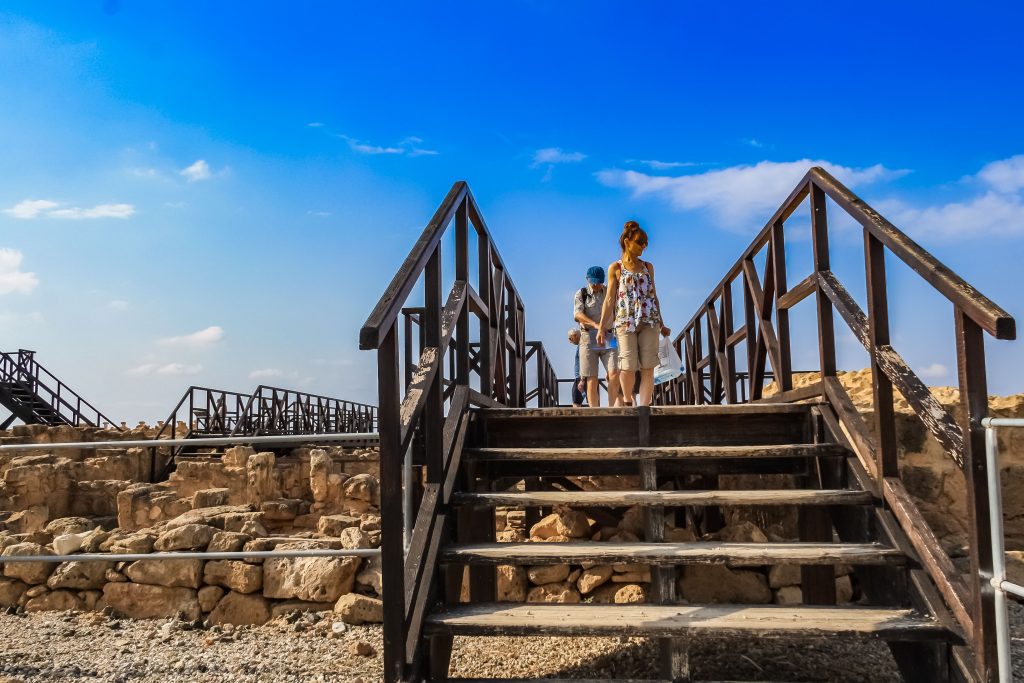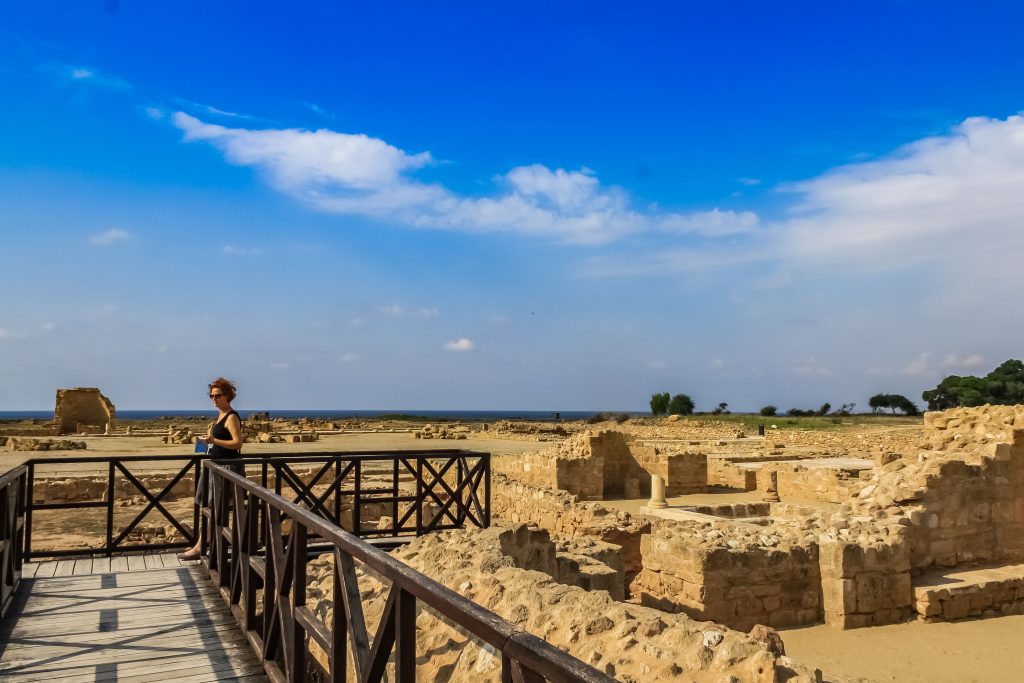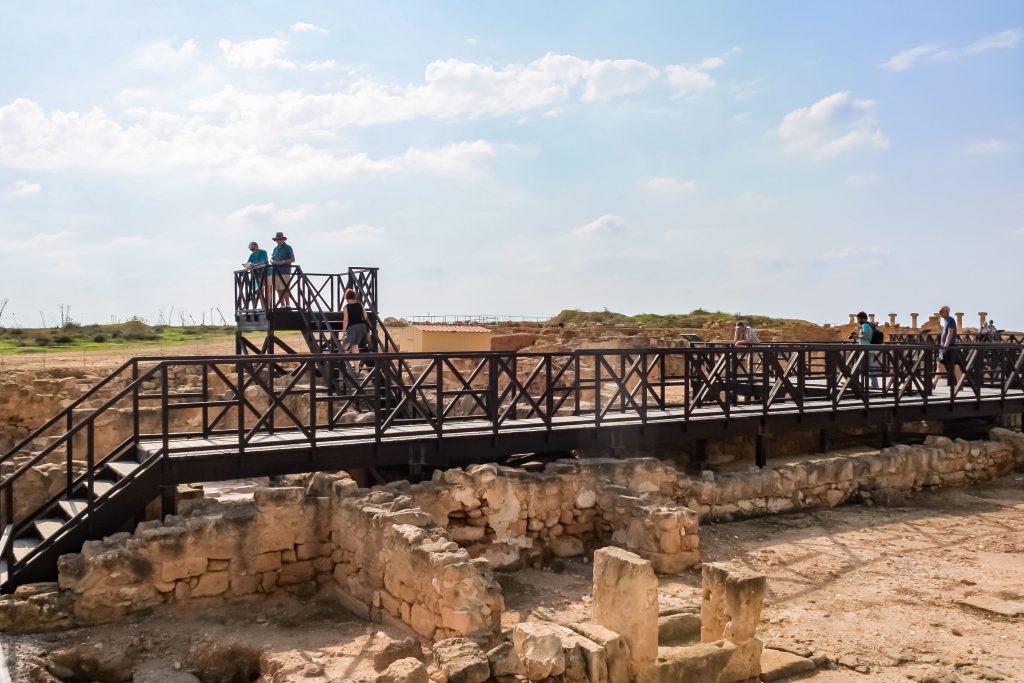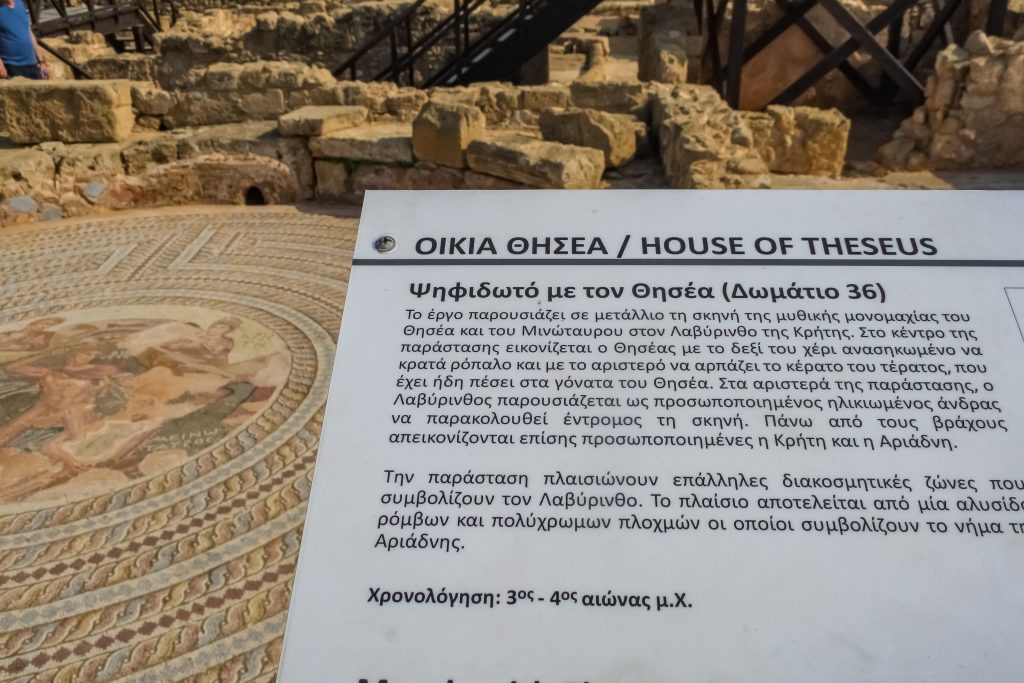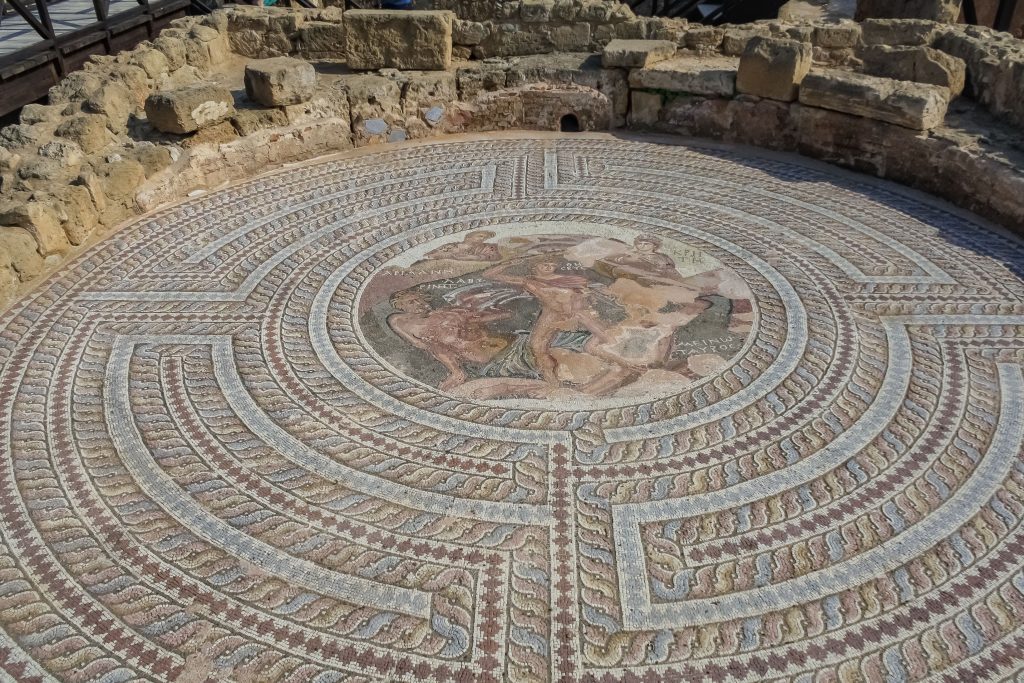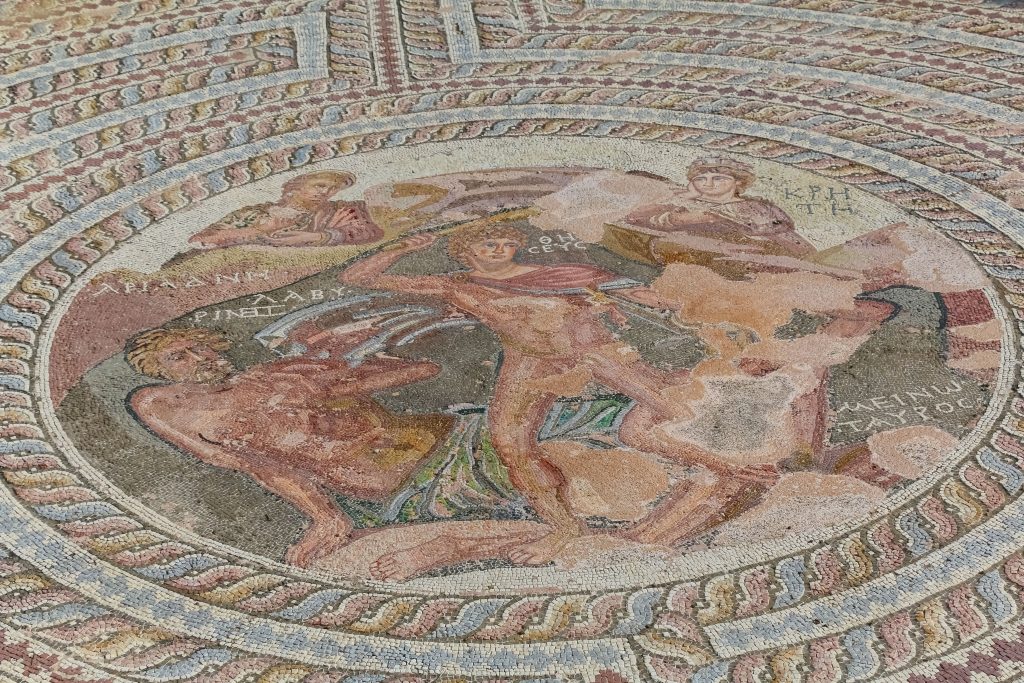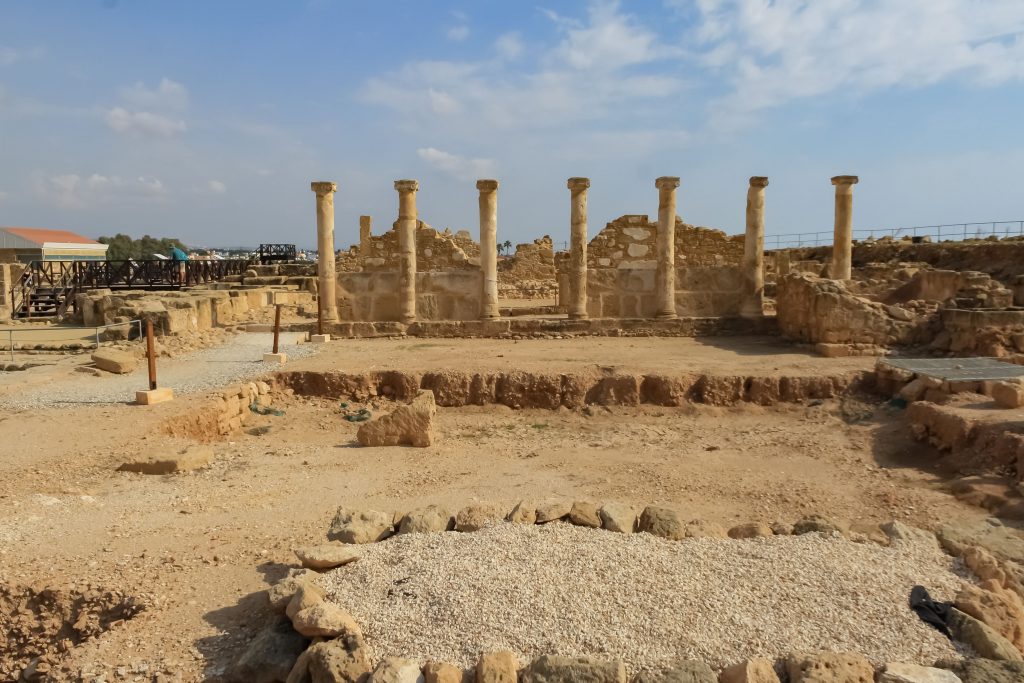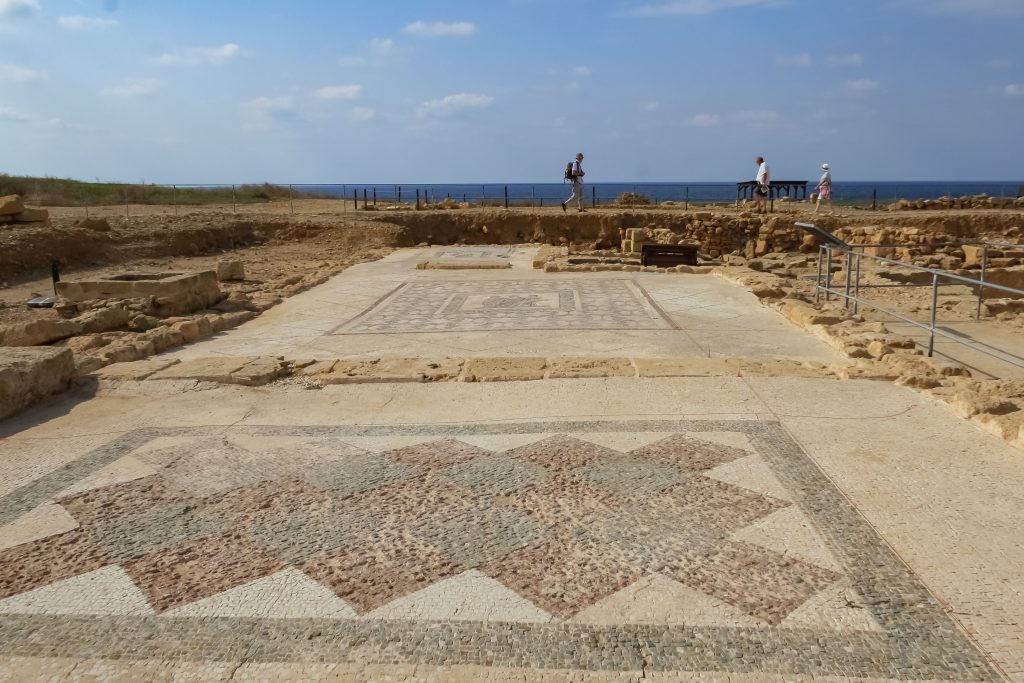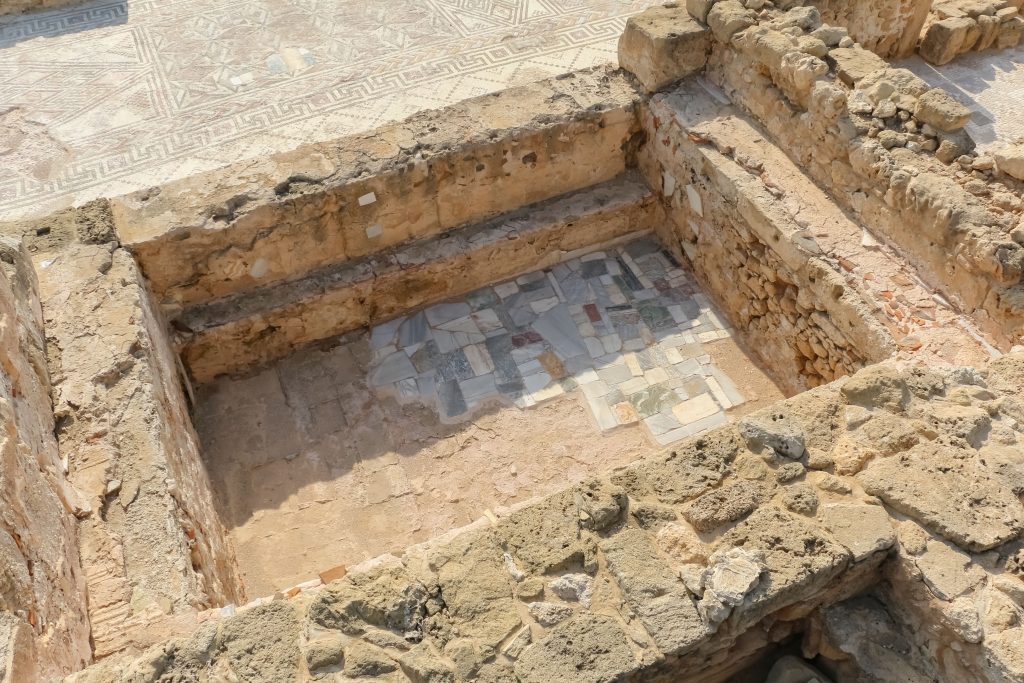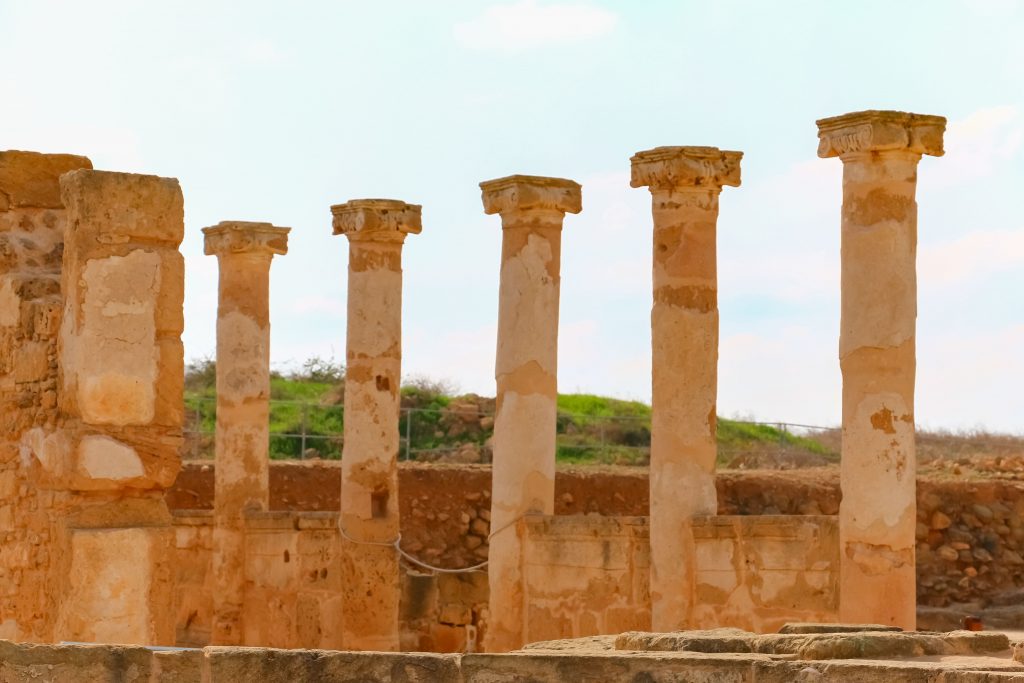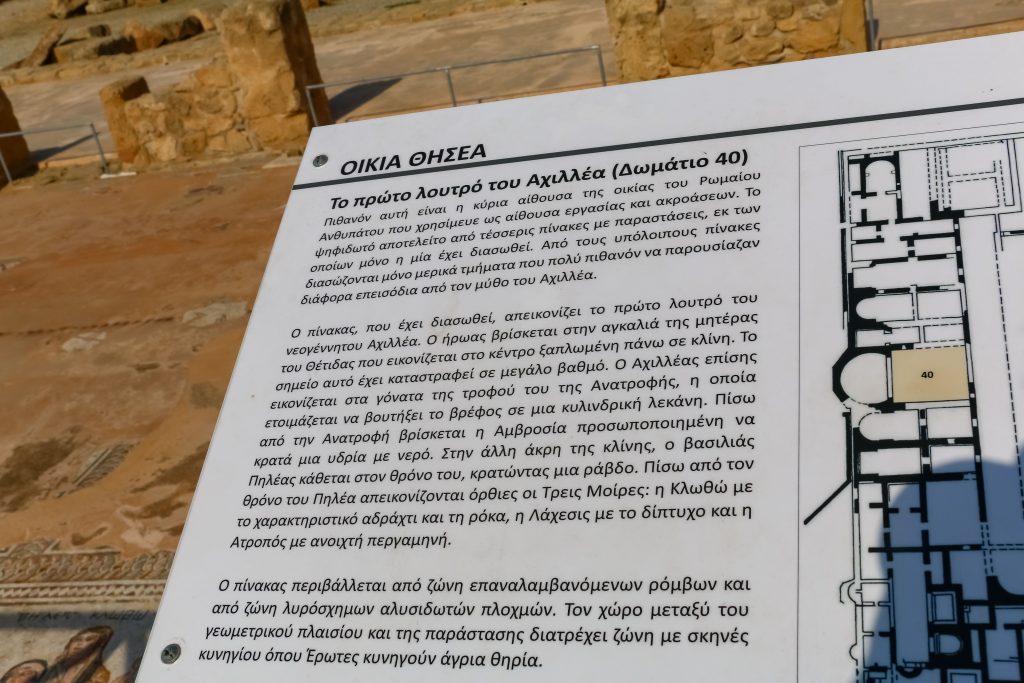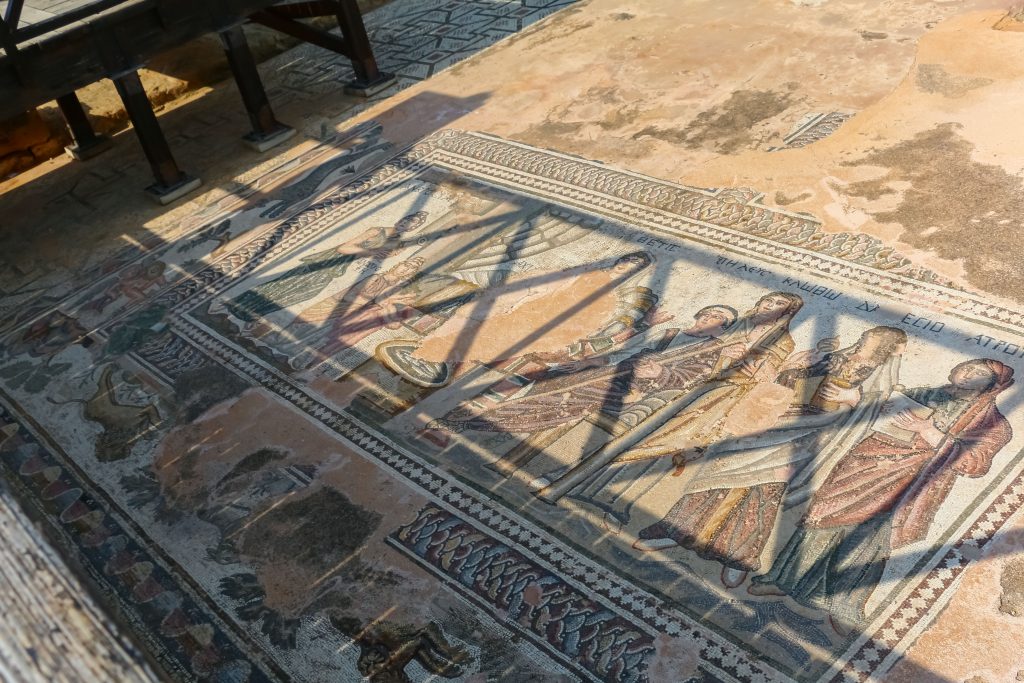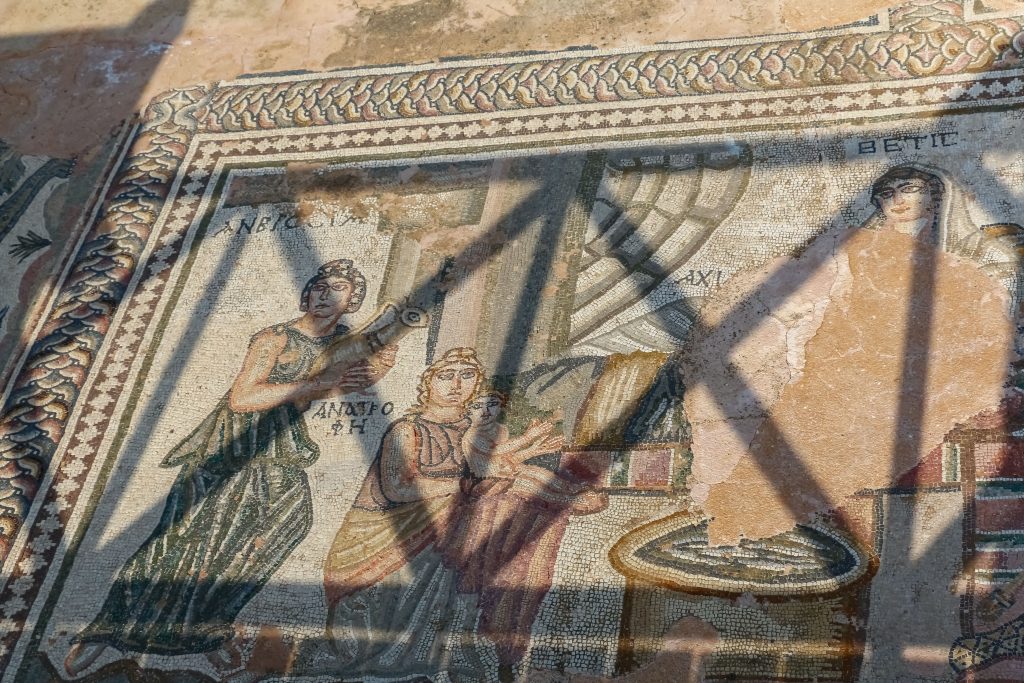House of Theseus

The House of Theseus is one of the villas that host the famous mosaics of Paphos and is part of the vast area of the Archaeological Park of Kato Paphos, while it is located at a distance of some 150 meters southwest of the House of Dionysus.
A magnificent building that was built in the second half of the 2nd century AD on the ruins of older houses of Hellenistic and Roman times, the House of Theseus is considered to be the home of the Roman proconsul or a public building. After its destruction from the earthquakes of 332 and 342 AD, it was rebuilt and modified to serve administrative purposes, and was used as a summer cottage for the Roman governor.
The luxurious building, revealed by the excavations of the Polish mission of the Warsaw University, is framed by two large vaulted rooms, which were the main single reception area. It includes over 100 rooms built in four wings and arranged around a large square, outdoor and paved courtyard, and many of them, like the three galleries around the central patio, are covered with exceptional mosaic compositions. Its main entrance is in the eastern wing and bordered by a public road that lead to the theater and the harbor of the city. It is the largest of all public buildings known to this day in the whole of Roman Cyprus.
Its name derives from the many mosaics dedicated to the Greek King of Athens, the son of Aegeus and Aithra. Theseus, in some of them, is depicted together with Ariadne and the Minotaur. In three of the rooms in the southern wing, where the administrative and ceremonial spaces were housed, there are the famous mosaic floors belonging to three different eras, with the oldest one at the eastern side dating back to the end of the 3rd century or the beginning of the 4th. The central representation lies within a wide circular frame, which is a schematic rendition of the labyrinth, and depicts Theseus standing up in the Labyrinth, killing the Minotaur. To the right of Theseus lies an elderly man, who is the personification of the Labyrinth and outside of it, waiting for him, are the personified island of Crete and Ariadne. With the earthquakes of 332 and 342 AD, part of the composition and mainly the heads of Theseus and Crete were destroyed but restored at the end of the 4th century.
Another important mosaic shows Poseidon crossing the sea with his wife Amphitrite and dates back to the end of the 4th century, while the third one added to the main hall of the villa depicts the first bath of the newborn Achilles and dates back to the beginning of the 5th century. Other mosaics of interests include geometric decorations or other mythological representations, such as Leda washing in Evrotas and others.
In the eastern, western and northern wings of the House of Theseus were the workshops, services and public spaces. The south-eastern corner of the southern wing also revealed the remains of the building’s bathroom complex, the cold bath room (frigidarium), the room for the semi-hot bath, the hot bathing room (caldarium), the steam room, two locker rooms and the thermal system. The house of Theseus was inhabited until the 7th century AD, a period when the Arab raids began and it was abandoned ever since.
House of Theseus
Kato Paphos
Opening hours: 16 April to 15 September Daily 08: 30-19: 30
16 September to 15 April Daily: 08:30 to 17:00
Phone: 00357 26306217

